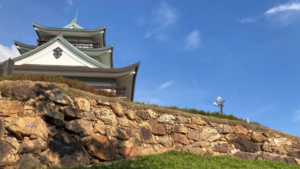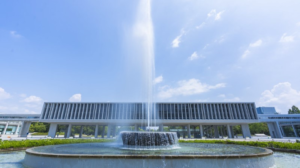Dazaifu Tenmangu, Enshrines Sugawara Michizane as The God of Learning
Dazaifu Tenmangu Shrine enshrines Sugawara Michizane (845-903, 菅原道真), a renowned scholar who supported the 59th Emperor Uda (867-931, 宇多天皇) as a ‘Monjo-hakase’ (a scholar of the highest rank), offering his extensive knowledge and insight during the emperor’s reign. The shrine is the head of the 12,000 Tenmangu shrines across Japan. Sugawara Michizane is revered as the god of learning, and many people visit the shrine to pray for success in their studies and exams. In early spring, the plum blossoms that Michizane loved bloom in abundance, filling the shrine with beauty and fragrance. Why did Sugawara Michizane become a god of learning? It has long been believed in Japan that the vengeful spirits of those who die tragically can cause natural disasters, epidemics, and other calamities. However, it is also believed that honoring these spirits can transform them into guardian deities to protect us. After Sugawara Michizane’s death, natural disasters, lightning strikes, and epidemics were attributed to his vengeful spirit. To appease his anger, he was worshipped respectfully. Given his esteemed deep learning knowledge, he was highly regarded and eventually became a god of learning.
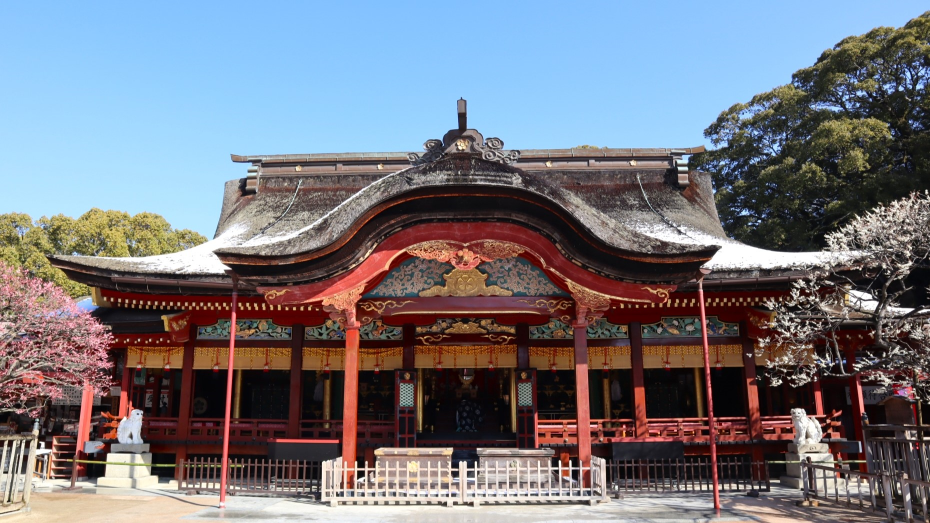
Emperor Uda Appointed Sugawara Michizane

(@ Colbase)
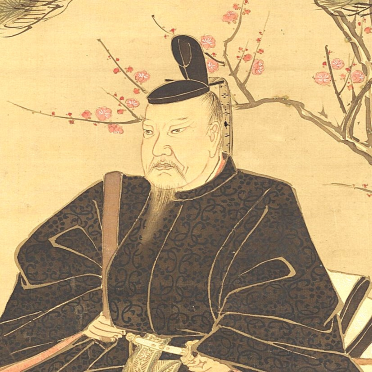
(@ Colbase)
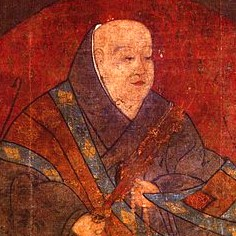
Emperor Uda, four generations descended from the 50th Emperor Kammu (737-806, 桓武天皇), who moved the capital to Kyoto (Heian-kyō) and initiated the Heian period, was the first Japanese Emperor to achieve three notable accomplishments. (1) He was given the surname 'Minamoto' and was demoted from the Imperial family to a subject, and then reinstated to ascend the throne. (2) He was the first to establish the position of Kanpaku, a regent with the authority to present the opinions of the Dajokan, a national government council, to the emperor (3) After abdicating in favor of his son, Crown Prince Daigo (885-930), he became the first Japanese emperor to take Buddhist vows at Ninnaji temple and became a cloistered emperor.
When the regent Fujiwara Mototsune passed away, Emperor Uda took a significant step towards restoring imperial authority. The men who supported Emperor Uda were Sugawara Michizane and Fujiwara Tokihira (871-909, 藤原時平), the third son of Mototsune. Michizane and Tokihira recited Chinese poems to each other, expressing their loyalty to Emperor Uda.
Thoughts On People: '10 Poems of Early Winter’(寒早十首)
In 886, after being appointed as the governor of Sanuki Province (Kagawa Pref.), Michizane traveled to his new post and saw the miserable conditions of the people. In his poem beginning with the line ‘Who will face the cold?’, Michizane describes ten types of people who live in extreme poverty and cannot even stay warm: those who have been sent back despite fleeing poverty, refugees from other provinces, elderly widowers, orphans, fishermen, and more. He concluded that the people who were supposed to sustain the country were being pushed to the brink, unable to make a living, which in turn was leading to the country’s collapse. Michizane deeply identified two primary causes: (1) the widespread falsification of family registers, and (2) the privatization of land by wealthy farmers and the Kyoto aristocracy.
Active in Politics
Born to a father who held the position of Monjo-hakase, Michizane showed exceptional skill in poetry from a young age and had a wealth of knowledge. In 877, at the age of 33, he was appointed Monjo-hakase himself and later held important positions at the Imperial Court. In 899, at the age of 55, he was appointed Right Minister, which was a remarkable achievement for a middle-ranking court noble, and placed him at the top of the Grand Council of State, the highest organ of the Imperial Court. His three major reforms were (1) transforming the government administration from a Fujiwara-centric system to direct imperial rule based on the Ritsuryo code, (2) abolishing official envoys to the Tang dynasty, and (3) reforming the chaotic system of manors, which led to financial recovery. His four-year experience as governor of Sanuki Province from 886 to 890, during which he witnessed the severe poverty of the people, who suffered under harsh labor and heavy taxation. This led him to focus on the well-being of the people upon his return to the Imperial Court, and he drove the financial reforms. He was highly trusted by Emperor Uda to the extent that one of his daughters was married to Emperor Uda.
A Bad Turn
In 897, Emperor Uda suddenly abdicated in favor of his 13-year-old crown prince and became a retired emperor. At this time, Emperor Uda gave the following advice to Emperor Daigo (885-930, 醍醐天皇): ‘Take advice from Sugawara Michizane and Fujiwara Tokihira when you rule the country.’ In 901, Michizane was promoted to the second-highest court rank, along with Tokihira. This was a moment for Michizane, a middle-class noble, to stand equal with the powerful Fujiwara clan. However, just 18 days later, Michizane was exiled to Dazaifu in Kyushu. His eldest son and three other children were also exiled. Michizane was forced to pay for his journey to Dazaifu, receiving no salary or servants, and was forbidden from engaging in political affairs. His political career was suddenly ended. He experienced deep disappointment and loneliness. Despite this, Michizane prayed for the prosperity of the Imperial Family and the peace of the nation, without resenting the heavens or hating others. In Dazaifu, however, he struggled to provide for himself, eventually falling ill and dying on 25th February 903 at the age of 59. According to his will, his remains were buried in the Dazaifu area. As his funeral procession moved forward, the oxen pulling the carriage carrying his body suddenly would not move. This must have been the will of Michizane, so they buried him there and made it his grave. This is where Dazaifu Tenmangu Shrine was built.
The waka poem composed by Sugawara Michizane when he left for Dazaifu, who longed for the plum blossoms in his home in Kyoto, is very moving:

When the east wind blows,
Bring your fragrance, O plum blossoms.
Even though your master is gone, do not forget the coming of spring
- Shui Waka Shu": Collection of Gleanings of Japanese Poems -
There are several theories for Michizane's exile. The underlying reason seems to have been the conflict between the cloistered Emperor Uda and Emperor Saga. Emperor Uda's excessive reliance on Sugawara Michizane, along with his recommendation that Saga’s younger brother marry Michizane’s daughter, suggests the relationship of trust between Emperor Saga and Michizane.
Michizane's Vengeful Spirit Roams Kyoto
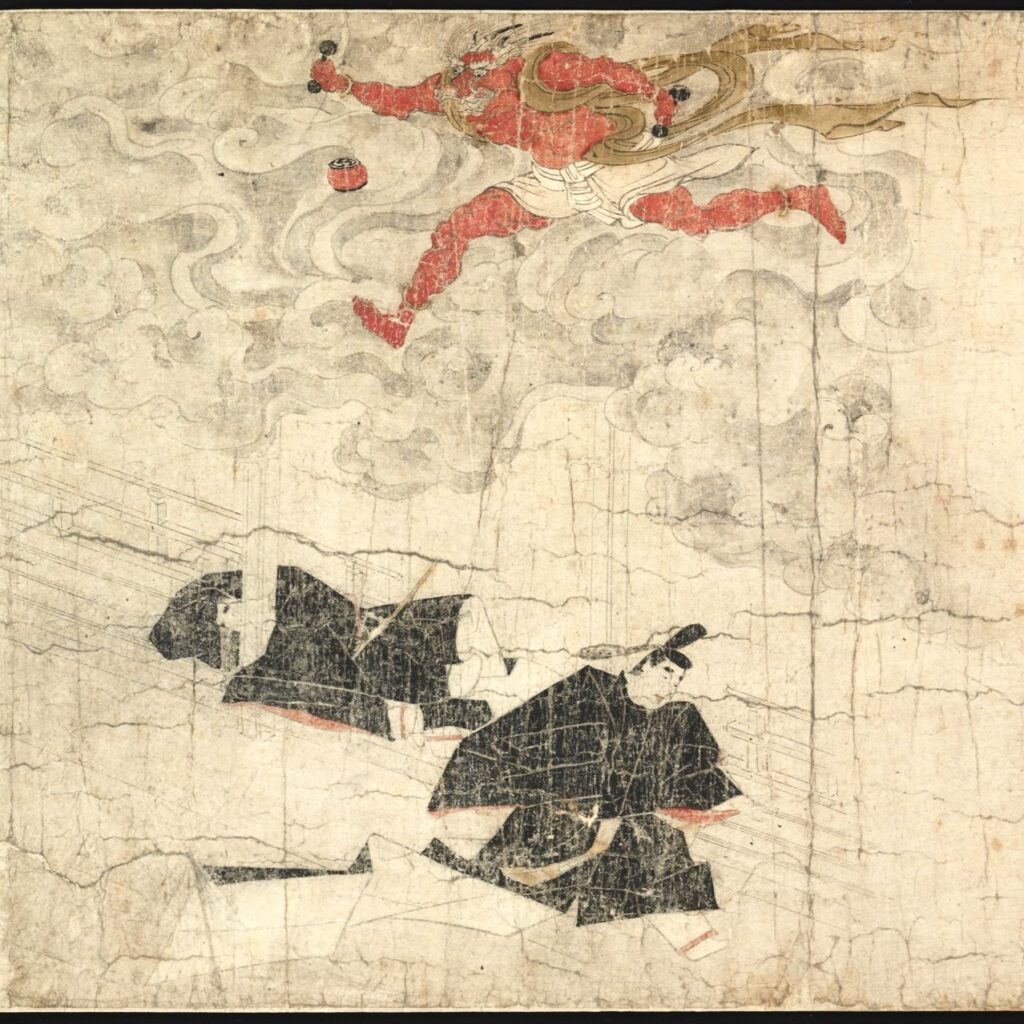
(@Colbase)
After Michizane died in despair, his vengeful spirit began to haunt Emperor Daigo and the Kyoto nobility. In 908, Fujiwara Sugane, who unhorsed Michizane, was struck dead by lightning, and the following year, in 909, Tokihira died at the age of 39. During this time, the nation was affected by a series of natural disasters such as floods, droughts, and epidemics year after year. People began to believe these calamities were the work of Michizane's vengeful spirit. In 923, Prince Yasuakira, who had been made Crown Prince at the age of just two with Tokihira’s support, died, followed by his son, the next Crown Prince, in 925. The most notable event occurred when lightning struck the Seiryoden Hall in the inner palace during a government meeting, killing and injuring several nobles, including Grand Minister Fujiwara Kiyotsura. Shortly after the incident, Emperor Daigo fell ill and died three months later. The misfortunes did not end with Emperor Daigo’s death. The emperor, who succeeded him, faced more calamities, including the eruption of Mt. Fuji, earthquakes, and floods. In 935, Taira Masakado rebelled in the Kanto region, and in 936, Fujiwara Sumitomo led a revolt in the Seto Inland Sea. The belief in Michizane’s vengeful spirit spread not only in Kyoto but throughout Japan.
Michizane Becomes Tenjin Deity
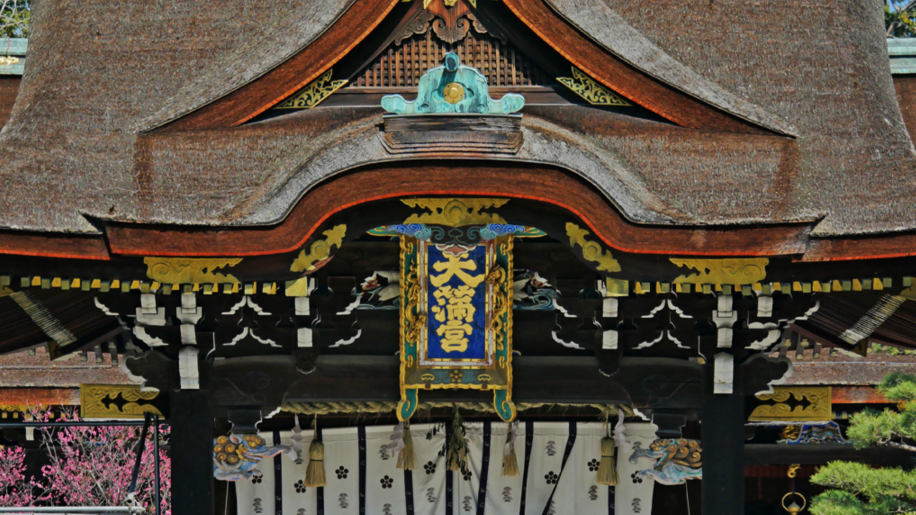
@京都フリー素材
In 947, Kitano Tenmangu Shrine was built in Heian-kyo (Kyoto) to appease the spirit of Michizane. The shrine is located in the northwest direction of the Imperial Palace, which was believed to be the direction from which Michizane’s spirit would travel. By pacifying this northwest area, it was hoped that Michizane’s vengeful spirit would be pacified. In 987, Emperor Ichijo (980-1011, 一条天皇) gave Michizane the title of ‘Tenjin Deity’, and he became worshipped as the god Tenjin Deity.
Dazaifu Tenmangu Shrine is the burial place of Michizane, and Kitano Tenmangu Shrine is the birthplace of Tenjin. Both shrines worship Sugawara Michizane as the Tenjin Deity. In the Heian period, when science was not yet developed, people believed that natural disasters such as lightning, earthquakes, and epidemics were the work of vengeful spirits. People feared these vengeful spirits. For this reason, they worshipped them with great reverence and deified them as guardian deities. In early spring, when the Japanese plum blossoms are in bloom, why not visit the two Tenmangu shrines and reflect on the achievements of Sugawara Michizane?
Sugawara Michizane's Timeline
| Sugawara Michizane | Period | ||
| 845 | Sugawara Michizane was born | Age=1 | Heian Perido |
| 877 | Sugawara Michizane became Monjo-hakase | 33 | |
| 886 | Sugawara Michizane was appointed the governor of Sanuki | 42 | |
| 890 | Sugawara Michizane returned to Kyoto | 46 | |
| 894 | Sugawara Michizane advised to abolish the envoy to the Tang dynasty | 50 | |
| 897 | Emperor Uda abdicated in favor of his crown prince. | 53 | |
| 897 | Emperor Daigo ascends the throne | 53 | |
| 899 | Sugawara Michizane was appointed Right Minister | 55 | |
| 901 | Sugawara Michizane left Kyoto for Dazaifu in Kyushu | 57 | |
| 903 | Sugawara Michizane passed away at Dazaifu | 59 | |
| 908 | Fujiwara Sugane was struck dead by lightning | - | |
| 909 | Fujiwara Tokihira died | - | |
| 923 | Crown Prince Yasuakira died at age of 2 | - | |
| 923 | Sugawara Michizane was restored to the position of Right Minister | - | |
| 925 | Crown Prince of Yasugakira died | - | |
| 930 | Seiryoden Hall was struck by lightning | - | |
| 930 | Emperor Daigo passed away | - | |
| 935 | Taira Masakado rebelled in the Kanto region | - | |
| 936 | Fujiwara Sumitomo led a revolt in the Seto Inland Sea | - | |
| 947 | Kitano Tenmangu Shrine was built | - | |
| 987 | Emperor Ichijo gave Michizane the title of ‘Tenjin Deity’, | - |
Recommendations to visit
Dazaigu Tenmangu Shrine
- Access: 40-min bus from Hakata Bus Terminal to Dazaifu. A 5-min walk.
Kitano Tenmangu Shrine
- 35-min bus from Kyoto Station. Take bus #50 at B2. Get off at Kitano Tenmangu bus stop

